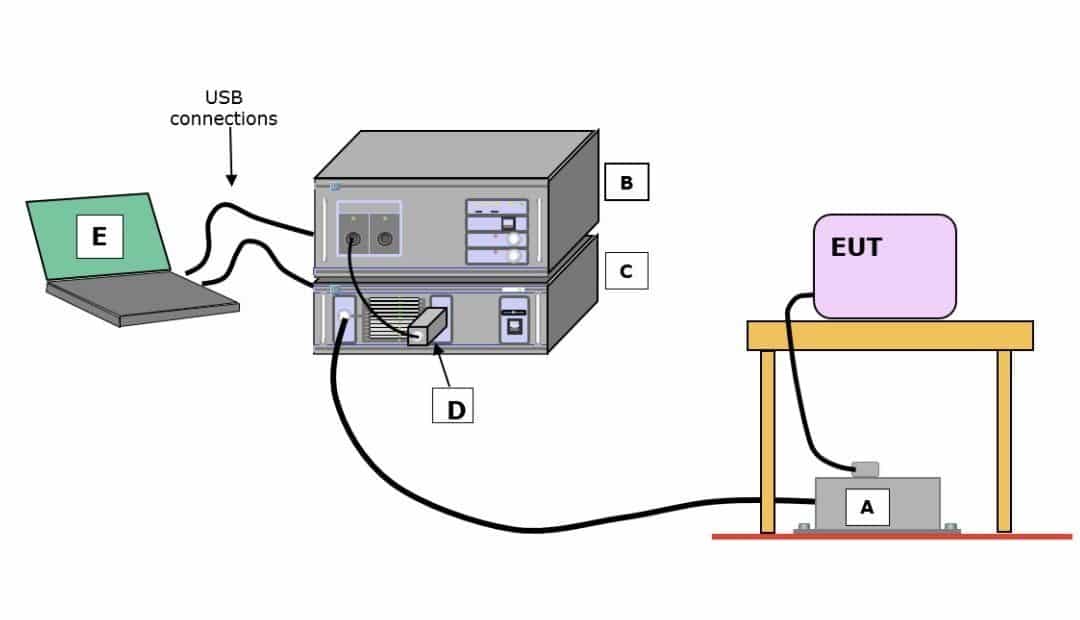EMC (ElectroMagnetic Compatibility) testing consists of various tests. One of them is Conducted Emission testing which is applied to many electrical products. In this test, it is checked whether the unwanted frequencies emitted from the output ports or cables of the products are below the limits.
Conducted Emission testing is one of the EMC tests. With Conducted Emission test, electromagnetic unwanted signals emitted from the output ports or cables of the product are measured. Depending on the test standard applied, the unwanted signals are generally in this frequency range: 9kHz-30MHz. These are for commercial products. In special cases, like automotive or defense, frequency range is broader. The measured value in the Conducted Emission test is uV (micro volt) since this is conducted voltage measurement. In order to show the limits on frequency spectrum and test standards more understandable, this unit is used with logarithmic expression (dBuV).
The devices and auxiliary items used in the Conducted Emission test are as follows:
EMI Receiver,
RF Cable,
Line Impedance Stabilization Network (LISN),
Isolation Transformer,
Appropriate Test Table,
Grounding Cables,
Computer and Test Software (for automatic Conducted Emission testing)
The scan is carried out using the EMI Receiver from the Conducted Emission test to measure peak and average values of the signals. As a result of scanning in the EMI Receiver, the Peak and Average measurement results are compared to the limits specified in the test standard. For peak values, it is usually necessary to perform manual additional measurements after scanning, since Quasi-Peak (QP) limits are given. The EMC test expert who conducts the Conducted Emission test, completes the test after completing the QP measurements and evaluating whether the product has passed the test. Tests are carried out according to test standards starting with IEC, EN or other ones…
Conducted Emission testing is one of the EMC tests which is closely related to many sectors from the lighting industry to the defense industry. Since many products have cables or I/O ports, the electromagnetic effects that may occur here may affect other products or systems. One of the EMC tests, Conducted Emission test, is used to prevent this interaction. We can also give examples of everyday life regarding the Conducted Emission test: the impact of a television operating in the same environment while the vacuum cleaner is operating. The vacuum cleaner and television use a common supply (mains) network as they are fed from the same network, so if the vacuum cleaner emits electromagnetic signals unwanted signals, we call it operation emission. If this spread is above the limits, the television may be adversely affected by these signals, resulting in loss of performance in the sound or image.
Testups offers Conducted Emission testing according to relevant product standards. Send us your product’s features and requirements, get Conducted Emission testing, and if necessary other EMC testing services.

Recent Comments